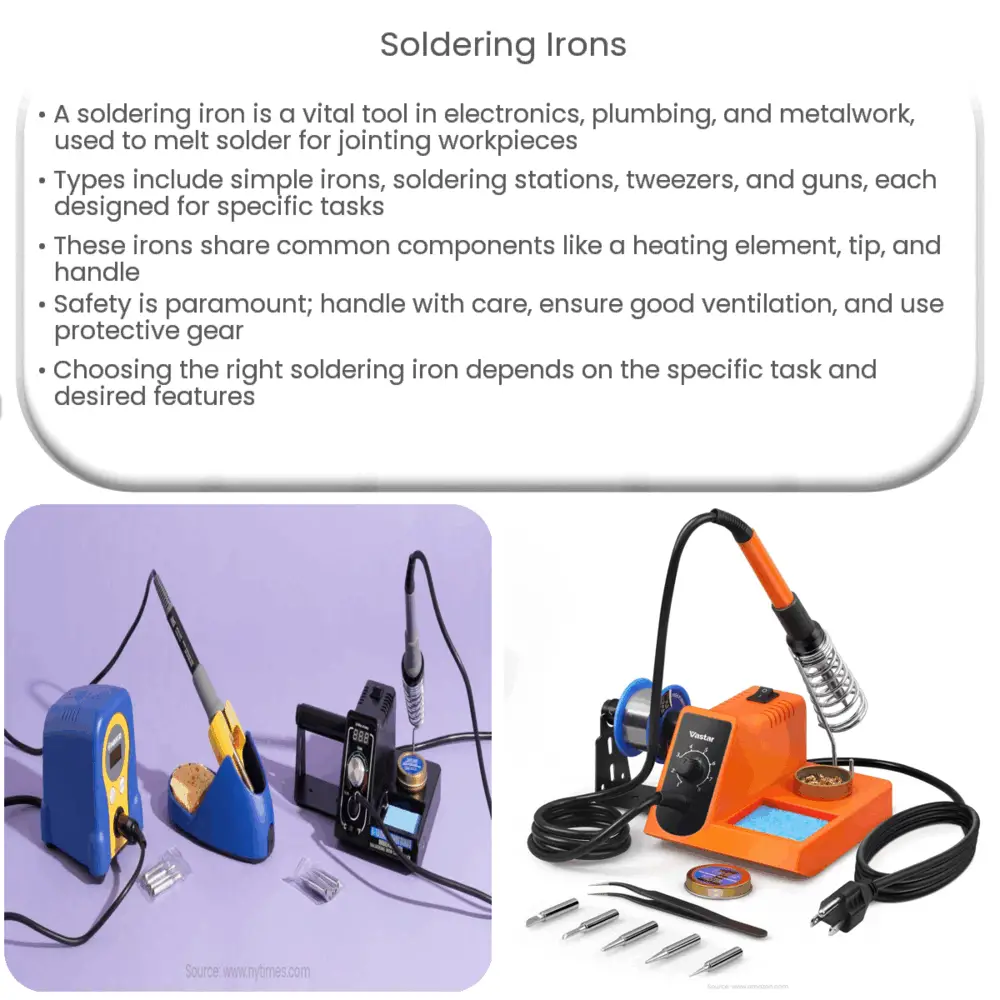Explore the world of soldering irons: types, components, usage, safety tips, and a guide to choosing the right tool for your tasks.

An Introduction to Soldering Irons
A soldering iron is a hand tool used in soldering. It supplies heat to melt solder so that it can flow into the joint between two workpieces. The tool plays an essential role in a variety of fields such as electronics, plumbing, and metalwork.
Types of Soldering Irons
Understanding the types of soldering irons can help you make the best choice for your specific tasks. Here are the primary categories:
The Anatomy of a Soldering Iron
While various types of soldering irons exist, they share some common components:
Whether you’re a hobbyist or a professional, understanding how a soldering iron works and the options available is the first step towards mastering this essential tool. We’ll delve further into the usage and safety tips for soldering irons in the following section.
Usage of Soldering Irons
Soldering irons are widely used for connecting components in electronic devices. They are an essential tool for anyone in electronics, from hobbyists building DIY projects to professionals making electronic repairs. Additionally, they are used in plumbing for joining metal pipes and in jewelry-making for fusing precious metals.
Safety Tips When Using Soldering Irons
While soldering irons are useful tools, they can be dangerous if not handled properly. Below are some safety tips:
Choosing the Right Soldering Iron
When it comes to choosing a soldering iron, it’s essential to consider the tasks you plan on using it for. For delicate electronics work, a lower-power soldering iron with a fine tip may be suitable. For more substantial work, such as plumbing or metalworking, a high-power soldering gun may be more appropriate. Other factors to consider include temperature control, the type of power supply, and the quality of the tips.
Conclusion
In conclusion, soldering irons are indispensable tools in various industries, including electronics, plumbing, and jewelry-making. Understanding the types, components, usage, and safety measures related to soldering irons will help you use them effectively and safely. Whether you’re a hobbyist or a professional, the proper soldering iron can help you achieve precise, high-quality work. So, take your time to understand your needs and choose the right soldering iron for your applications.

